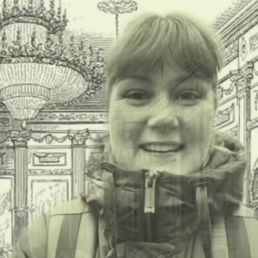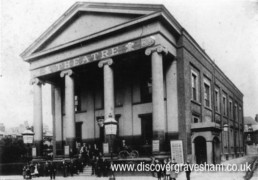The Grand Theatre
Explore inside the Grand Theatre and see its original exterior.
Choose the Instagram or Facebook button below to open the AR experience.
Tap to change locations and use your front facing camera to take a historic selfie portrait.
This experience will open your camera feed.
History
At the north end of Harmer Street on its eastern side there stood until 1955 a stucco covered building with an ionic portico that had been built in 1842 as ‘The Literary Institution’. The architects were Messrs Cobham and Wright, a local firm, and it cost £3000. It originally contained a reading room and lending library, a lounge and promenade, a billiards room and an assembly room for concerts, recitals, lectures and balls. Furnished with a very fine organ presented by Alderman Harmer, it was much patronised by visitors to the town until the 1840s – 1850s. It was also known as ‘The Assembly Rooms’. As the fortunes of Gravesend as a holiday centre decreased, its fortunes, too, diminished, and for some seasons it was known as ‘Kelner’s Bazaar’ after its proprietor.
In the 1890s, an extensive reconstruction took place. The broad gallery (which stretched along its northern side) was taken down, galleries at the west end constructed and the building reoriented to conform to the required shape of a theatre. It then first became ‘The Prince of Wales Theatre of Varieties’ in 1884 and ‘The Grand Theatre of Varieties’ in 1900. The coming of cinema to the town from 1910 onwards introduced competition that the Grand was unable to stand against. After being sold in 1927 it closed in 1933, although the bar remained open, and in 1952 the roof fell in. In 1955 it was rebuilt as a public house and, because of its former function, was given the name of ‘The Call Boy’.
With thanks to Lynda Smith for information about the Grand Theatre in her book “Fun and Frivolity: Nineteenth Century Amusements in Gravesend”.

